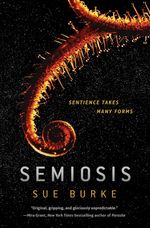I bought The Outer Worlds a few years back, probably around the same time I bought Outer Wilds, and finally picked it up a few weeks ago.
About 15 minutes into the game, my biggest impression was “Whoa, the designers on this really liked Firefly.”
The ship’s cargo hold looks like the Serenity, the first town you visit has a neo-western-frontier look to it, the town administrator looks like Badger, the first person who can join your party is a perky mechanic…
It’s very much unlike Outer Wilds or No Man’s Sky. This is an RPG, the kind where you choose different attributes and skills and level them up as you go, collect items to use in exploration or combat, build up a crew and so on. It’s not a spaceflight sim. The quests sometimes involve combat, sometimes problem solving, sometimes diplomacy. Often there are several ways to solve them, and you have to choose one.
And sometimes those choices are hard: The mainline quest in the starting town involves choosing one of two communities to cut power from so you can take the last part you need to get your ship flying again. And by the time you get to it, you’ve talked to enough people in each that whatever your take on the town leadership, it’s clear that the ordinary people are going to suffer one way or another. If you want to keep playing the game, you have to pick the least-bad option, and the best you can do from there is reduce the harm.
The solar system it takes place in was colonized by corporations. It’s hyper-capitalist, cutthroat business from the boardrooms down to the cannery floors, and every town is a company town. Exploitation and indentured servitude are the norm. People are required to spout company slogans during otherwise everyday interactions. The crappy healthcare system rations supplies by patients’ work output, blaming them for their own illness. Sometimes the satire is funny, but sometimes it’s just depressing to talk to characters who have never known anything else.
The main story involves a sleeper ship that arrived late. Rather than spend the money to awaken people who had already been written off, the companies decided to just keep it quiet and leave it somewhere no one would notice. You’ve been awakened by a notorious “criminal,” who says he wants your help gathering the supplies he needs to awaken the rest of them. Though there are hints he might have another motive.
I’m still relatively early in the game, exploring the first offworld port you can get to. Doing my usual thing where I try to find and complete every side quest before moving onto the next part of the main story. The characters and quests continue to be interesting, and I can imagine some good replayability from choosing different crewmembers to come with you on various quests, choosing different specialties so your main character has different options open to them, solving the quests differently, and seeing what that causes down the line.
Definitely recommended if you like RPGs, space, and stories dealing with morally ambiguous situations.
